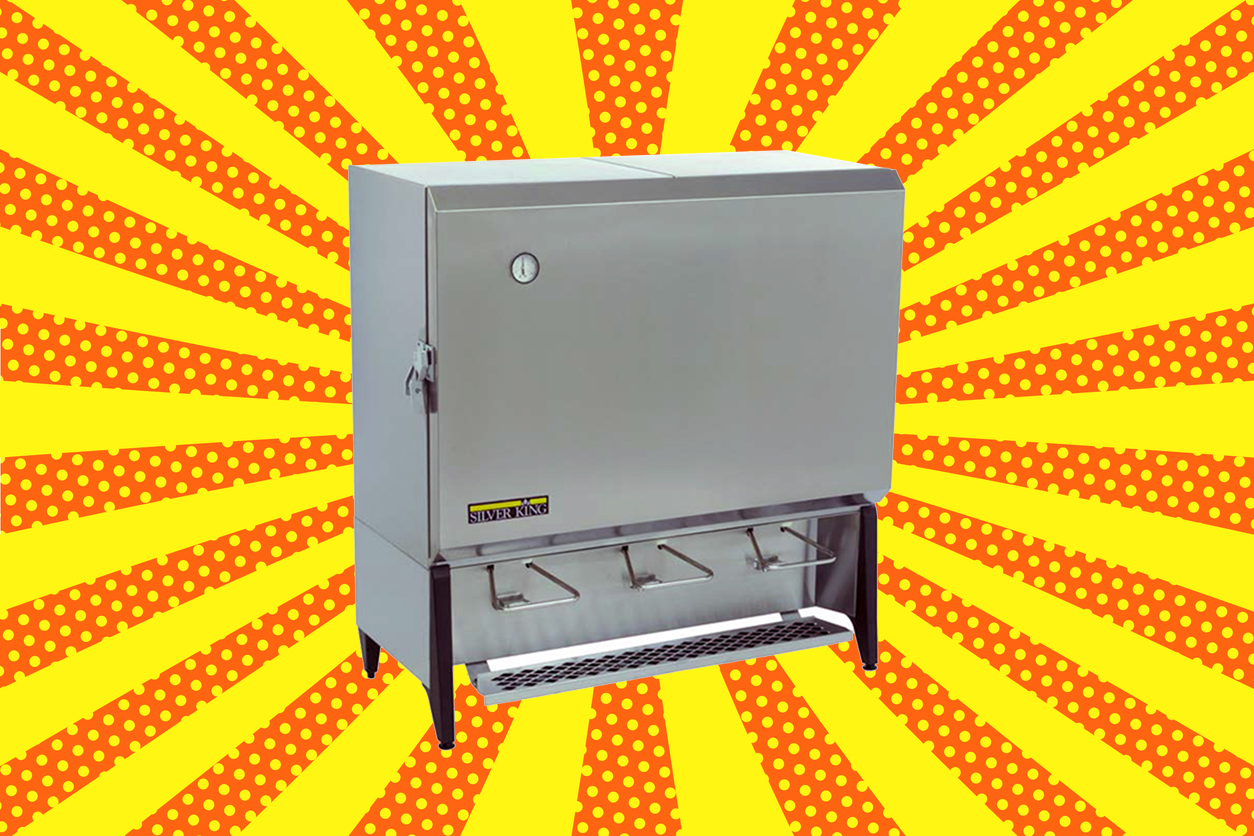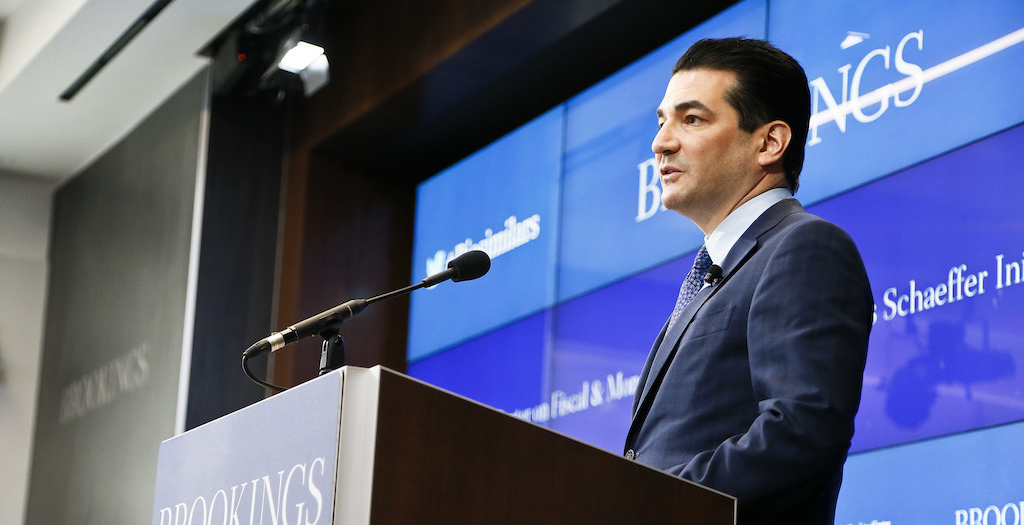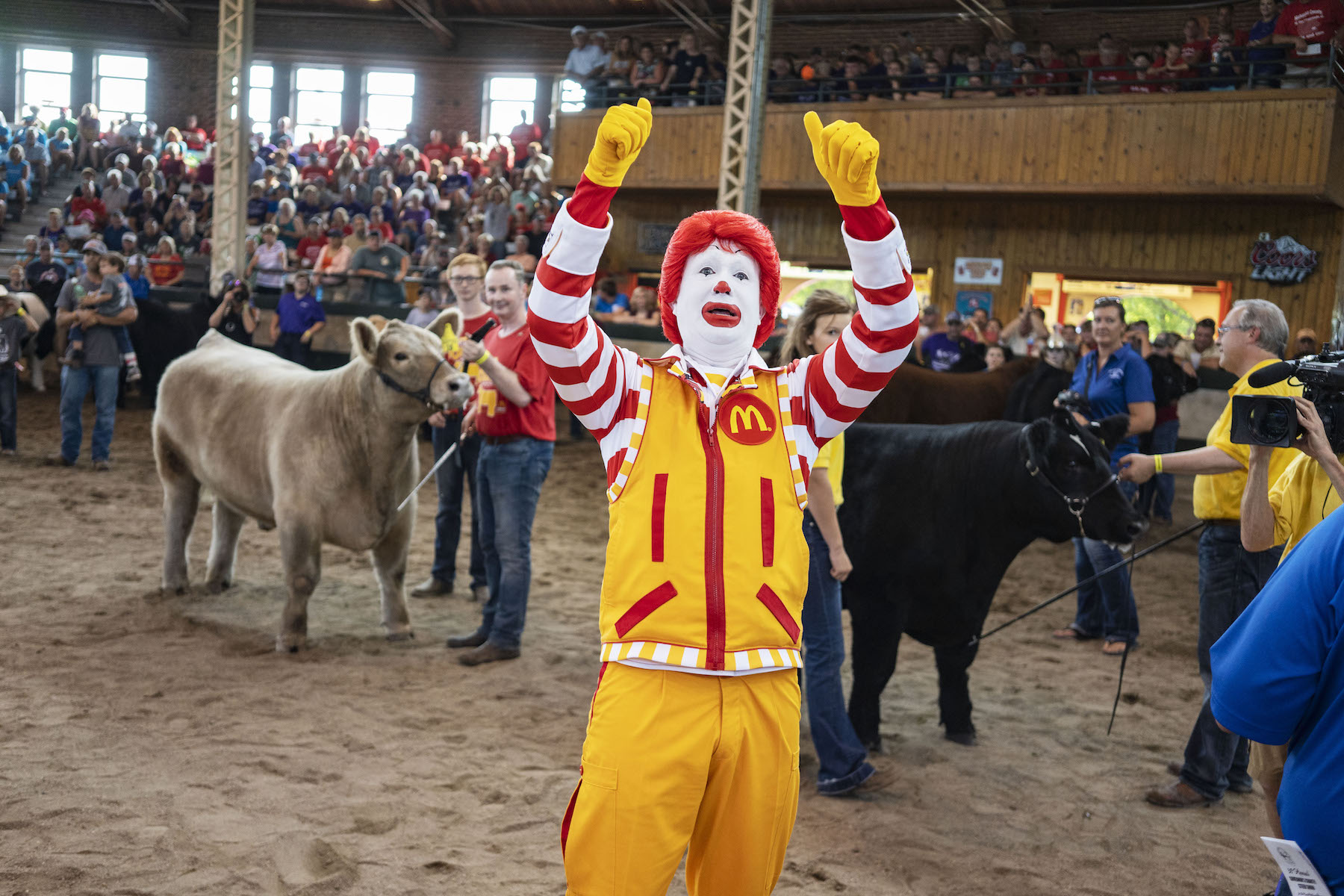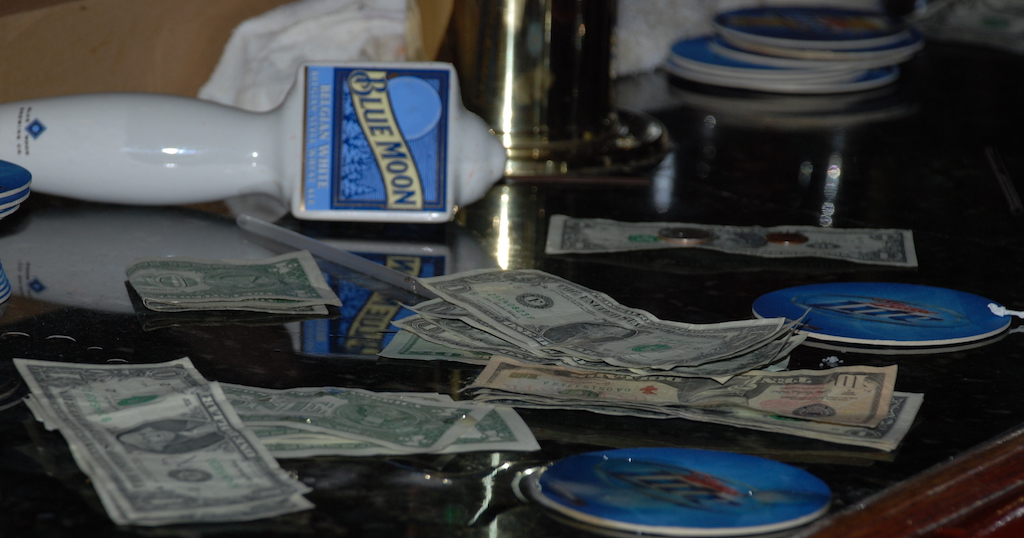
Steel King; Muni Yogeshwaran / iStock
Every school day some 30 million students eat meals subsidized by the National School Lunch Program (NSLP). Each of them is entitled to eight ounces of milk, and that milk almost always comes in a carton. The issue? Those students leave behind a lot of leftover milk—almost 30 percent, according to new United States Dept. of Agriculture data—not to mention tons and tons of empty cartons. There’s a lot of waste.
Enter the bulk milk dispenser, colloquially known as a “steel cow.”
Dispensers replace cartons with bulk milk sacks and reusable cups, allowing students to pour only what they’ll drink, and avoid all the wasteful individual packaging. It’s a pleasingly simple waste solution—with unexpectedly dogged hurdles in the way. Tight budgets, outmoded infrastructure, confusion about NSLP rules, and basic logistical issues have made dispensers surprisingly tricky to implement.
But in a handful of districts in the Pacific Northwest, cafeteria workers, custodians, school administrators, and students are working together to bring steel cows into their schools. If their efforts are duplicated across the country, the environmental benefits could be massive. Each district looking to adopt milk dispensers would have to overcome their own set of challenges, but the work being done could create a roadmap for others to follow.
???
Milk dispensers loosely resemble commercial coffee makers, with a stainless-steel, refrigerated compartment stacked over pour spouts and a drip tray. If you’ve ever gotten milk in, say, a hospital cafeteria or an IKEA, you probably know the design.
At Columbia Valley Elementary in Vancouver, Washington, the school’s Green Team—student volunteers who help implement practices like bottle-refilling fountains—convinced their principal to participate in a county-wide milk dispenser pilot. Two dispensers arrived at the end of January 2019.
Each school day since then, Columbia Valley cafeteria workers have filled its pair of twin-spigot machines with five-gallon sacks of nonfat and one-percent milk. A hundred and ten pounds when empty, each dispenser sits on a sturdy, wheeled cart, low enough for children to reach and for staff to restock through a front panel.
Third-grader Scott Cantonwine wanted the dispensers after discovering how much milk was being wasted. He was part of the team that convinced his school to give steel cows a try. “Sometimes people won’t even open their milk and drink it, so that wastes a ton of milk and the carton,” he tells me. “So if we got the plastic washable cups with the milk dispensers, they could get the right amount of milk that they wanted.”
???
Despite the evident benefits, some school administrators argue that milk dispensers could violate school lunch regulations set by the USDA. Schools participating in the NSLP are reimbursed for every lunch served, as long as meals meet nutritional guidelines. A common concern about milk is that, if schools don’t ensure that students take exactly eight ounces of milk, they’ll be out of compliance. Cash-strapped food services programs running on tight margins can’t afford to lose that reimbursement.
 U.S. Air Force
U.S. Air Force USDA analysis found nearly 30 percent of school milk cartons are thrown away, untouched
NSLP guidelines identify five food types: milk, meat or alternative proteins, grains, fruit, and vegetables. A reimbursable meal must include at least three of those types, and must include at least one serving of either fruit or vegetables. Milk is not required, but it must be available. And, if it is part of a reimbursable meal, it must be an 8-ounce serving.
A USDA spokesperson writes: “The regulations … do not mandate any specific type of packaging for milk served as part of the reimbursable meal, nor do they restrict the ability of schools to use milk dispensers. However, schools that use dispensers are expected to take steps to ensure that children receive the required 8 oz. serving when selecting milk.”
That information is either too open to interpretation, or it isn’t common knowledge for whatever reason. Paul Flock, supervisor of nutrition services for Olympia Public Schools in Washington state, hoped that his cafeterias could use steel cows, but wasn’t certain. He reasoned that Olympia’s school lunches fulfilled NSLP requirements through combinations of protein, grains, fruit and vegetables—effectively rendering milk optional. Still, he wasn’t sure that the state’s Office of Superintendent of Public Instruction (OSPI) would share his views.
“I was kinda sticking my neck out. I wasn’t sure,” says Flock in a phone call. “We get a review every three years. When they came out, they looked at a school and they saw this milk dispenser—they had never seen anything like this before, so they kinda were scratching their heads.”
But, after an audit, the OSPI ultimately okayed the dispensers. Today, 11 Olympia schools have them.
???
Some schools have conducted waste audits in order to gauge the impact of milk dispensers. Cartons are tallied as they’re thrown away and leftover milk is measured in dump buckets a) before a steel cow arrives, then b) a few months after.
In Oregon, the Canby School District introduced steel cows at four elementary schools at the start of the 2018-19 year. According to director of nutrition services Galina Dobson, the combined weekly fluid milk waste before installing steel cows was 280 quarts, equivalent to 1,120 cartons. Afterwards waste had fallen to 191 quarts, equivalent to 766 cartons.
A June 2014 report prepared by Peter Guttchen, then with Thurston County’s Department of Solid Waste (which oversees Olympia), states that Olympia High School reduced their annual waste collection costs by $1,970 by switching to dispensers. That same report estimates that Washington Middle School, also in Olympia, is saving $750 annually on their trash bill. Washington Middle is also estimated to be saving about $12 each month in electrical costs, because they’ve found dispensers to be slightly more efficient than milk coolers.
“When you look at the cost of garbage disposal, recycling costs, can liners, energy costs, custodial labor costs, all of those things drop,” says Guttchen, now with the Washington State Department of Ecology.
???
Savings in trash and electrical bills add up over time, but bulk milk costs roughly the same as milk in cartons. According to Hossein Akhtarkhavari, who is contracted to oversee food services operations for Columbia Valley and the rest of the Evergreen Public Schools, it actually costs about seven percent more because the milk sacks have to be filled by hand.
It would take a long time for the Canby district to recoup the cost of their dispensers through milk sales. At 23 cents per eight ounces, the price of one percent white milk is the same whether it comes in cartons or in bulk sacks; chocolate milk is two cents cheaper in bulk than cartons. Even with peripheral savings on trash and electricity, those savings won’t accumulate overnight.
Fortunately, in the Pacific Northwest, waste reduction grants can be used to buy milk dispensers. Marion County, which includes the Oregon state capitol Salem, received over $76,000 from the Oregon Department of Environmental Quality. Both Olympia and Clark County schools purchased steel cows with grants from Washington’s Department of Ecology.
“We’re looking at finding a way to expand the effort,” says Guttchen. “We’ve now made it clear to counties that using their waste reduction/recycling grant monies for this kind of effort is something we support, and all of those costs are eligible.”
???
One confounding issue? Bulk milk isn’t available everywhere. Bailey Payne, waste reduction coordinator for Marion County, says that some of his districts ran into that issue with local dairies that “won’t provide what they’re asking for in bags.” Portland administrators were warned they would also have a hard time sourcing bulk milk if they invested in steel cows. If you can’t fill the steel cows, they don’t do much good.
Building design can be another problem. Not every school has a cafeteria, and not every cafeteria can accommodate a steel cow. Whitney Ellersick, senior director of nutrition services for Portland Public Schools, says that Oregon requires that all food is served before students are rung up by a cashier, and not every cafeteria has room for new equipment inside the serving area.
 Clark County schools
Clark County schools Bulk dispensers save money on peripheral costs like electricity and waste removal
Responding to parental interest in dispensers, Ellersick looked into the possibility but the logistics seemed too tangled. She says her attention is focused on just making sure that her students are getting fed.
Even schools that have dispensers often rely on cartons for use outside of the cafeteria. Olympia High School operates two dispensers, but only at lunch. Students who buy breakfast or are on break get cartons and take them back to class. In Vancouver, Misfeldt won’t even contemplate steel cows at her high schools because they’re open campuses. “Cups will end up in garbages,” she says. “They’ll just end up all over the campus if they’re not even in the garbage. Then you have to have somebody who can go retrieve them and bring them back.”
The perception that students cannot be trusted with cups of milk was common among sources I talked to, as are concerns that staff will not be able to handle the extra work of washing cups, cleaning up spills, or loading the dispensers. (Regarding that last item, Olympia’s milk provider agreed to short-fill bags in order to limit the weight to forty pounds, and it’s recommended that dispensers be kept low to the ground to make adding new sacks of milk easier.)
According to a 2016 report from the state of Vermont, two schools which tested dispensers decided to revert back to milk cartons a) because workers spent time filling cups to guarantee eight ounces were served, b) because of extra labor cleaning up spills, and c) because the price of bulk milk was two cents more expensive per eight ounces. No schools in the Pacific Northwest reported an uptick in spills or additional labor costs, but none of them allow students to take open cups of milk outside of the cafeteria either.
???
Ann Cooper, director of food services for the Boulder Valley School District in Colorado, worked with milk distributors to bring dispensers into all 52 of her schools. Cooper spoke with New Food Economy over the phone from Napa, California, where that district is planning its first dispenser pilot; she says that the nearby city of Novato is doing the same. Down in Texas, Anneliese Tanner, executive director of food services with the Austin Independent School District, writes that Austin is planning a pilot of two schools in the fall of 2019 and three more the following spring.
As word of successful milk dispenser pilots has spread, funding opportunities may be growing as well. Linda Mendoza of the Washington State Dairy Council is excited that students have taken to steel cows—and wants to see them become lifelong milk drinkers. She’s secured funds for five or ten pilots which she hopes to roll out. The National Dairy Council is also exploring ways to support interested schools. They’ve produced a FAQ and plan to discuss bulk milk at the forthcoming School Nutrition Association conference in July.
At day’s end, bulk milk dispensers have met barriers, but rarely do they seem insurmountable. What worked at Columbia Valley Elementary might not work for a school in Los Angeles, but that’s okay. Where there’s a will—and increasingly, there seems to be—there’s a way. It will take money and commitment and collaboration and, well, plain old hard work. Ultimately though, steel cows could one day be the new normal in school districts across the country.










